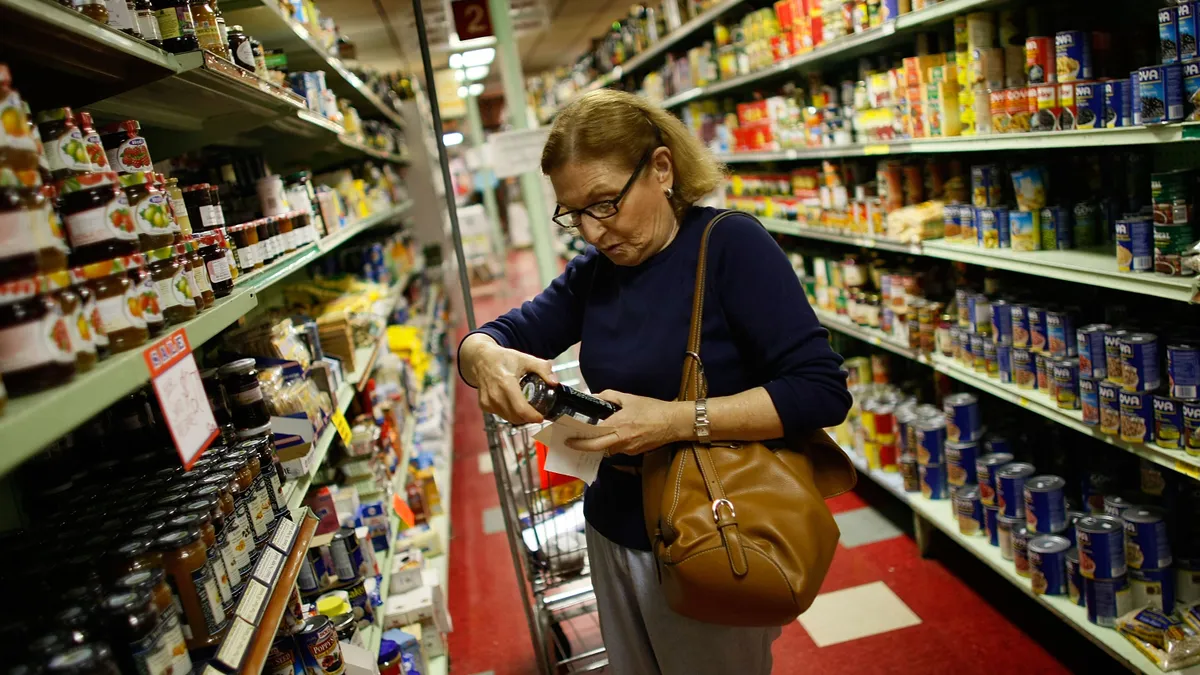Dive Brief:
- The surge in U.S. consumer prices slowed last month to 8.3%, but the decline from 8.5% in July is less than forecast and not enough to persuade the Federal Reserve to blunt its sharpest reduction in stimulus since the 1980s, economists said.
- While gasoline prices fell 10.6% in August, shelter, food and medical care costs rose, driving much of the increase in the Consumer Price Index (CPI), the Labor Department said Tuesday. In an especially severe setback for low-wage workers, shelter prices jumped 6.2% and food costs soared 11.4% in the highest 12-month gain since May 1979.
- “Fed officials have made it very clear that they will not slow the pace of rate hikes until they see convincing evidence that core inflation pressure is easing on a sequential basis,” Pantheon Macroeconomics Chief Economist Ian Shepherdson said in an email. He predicted that policymakers on Sept. 21 will raise the main interest rate by more than a half percentage point for the third consecutive meeting.
Dive Insight:
The highest inflation in nearly four decades has disrupted CFO strategies for prices and investment and, in combination with an usually tight labor market, made decisions on wages especially challenging.
Inflation is eroding pay — real average hourly earnings last month declined 2.8% on an annual basis, the Labor Department said Tuesday.
At the same time, competition for workers is fierce, with job openings more than double the number of people seeking work.
Many workers are resigning for higher compensation elsewhere. The quits rate, or the number of workers who left their jobs as a percent of total employment, has hovered since June 2021 at or near the highest rate since 2000, according to the Labor Department.
Fed officials when gauging progress in reducing workers’ pain from inflation should focus especially on shelter costs, which constitute one third of CPI, American Action Forum President Douglas Holtz-Eakin said in a report.
“The Fed will be making real progress on inflation when shelter price inflation starts moving downward in a significant and sustained manner, and not before,” according to Holtz-Eakin, former chief economist of the President’s Council of Economic Advisers. Current price pressures give “no reason for a victory dance or for the Fed to change course.”
The central bank, which plans to meet Sept. 20-21, increased the main interest rate by 75 basis at each of its most recent meetings in June and July. A basis point is one hundredth of a percentage point.
Fed Chair Jerome Powell and other policymakers have pledged to tighten monetary policy until they see evidence of a sustained decline in price pressures.
“Inflation is far too high and it is too soon to say whether inflation is moving meaningfully and persistently downward,” Fed Governor Christopher Waller said Friday.
“This is a fight we cannot and will not walk away from,” he said in a speech. “Until I see a meaningful and persistent moderation of the rise in core prices, I will support taking significant further steps to tighten monetary policy.”
The report on August price pressures is unlikely to prompt the Fed to slow its reduction in accommodation, Fitch Ratings Chief Economist Brian Coulton said.
A more than 6% increase in the price of services “is the biggest concern, fueled by an acceleration in rental inflation that looks like it’s got quite a bit further to go,” he said in a statement. “We don’t really see anything here that would make the Fed want to opt for a slower pace of rate hikes this month.”












